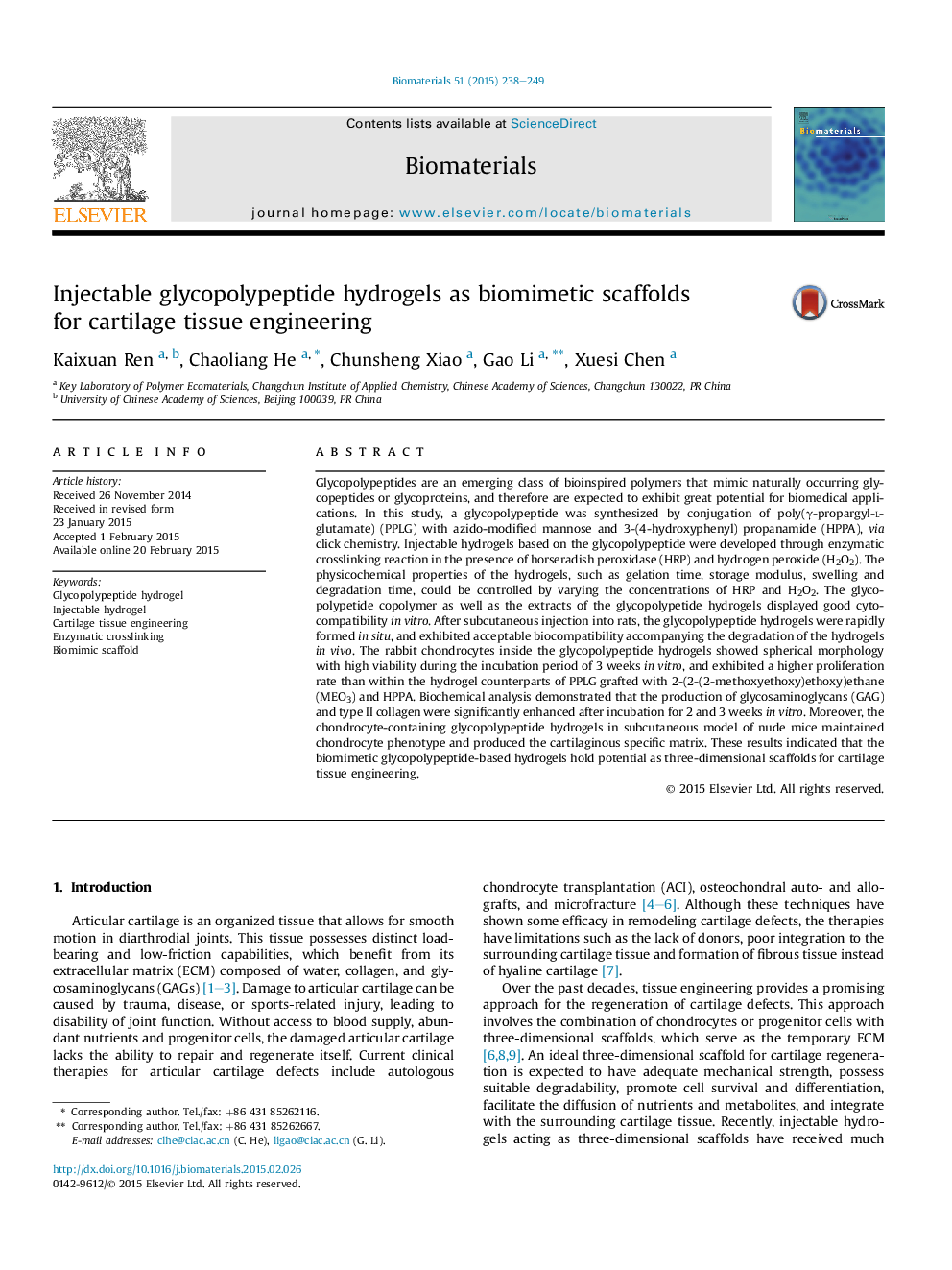| کد مقاله | کد نشریه | سال انتشار | مقاله انگلیسی | نسخه تمام متن |
|---|---|---|---|---|
| 5689 | 417 | 2015 | 12 صفحه PDF | دانلود رایگان |
Glycopolypeptides are an emerging class of bioinspired polymers that mimic naturally occurring glycopeptides or glycoproteins, and therefore are expected to exhibit great potential for biomedical applications. In this study, a glycopolypeptide was synthesized by conjugation of poly(γ-propargyl-l-glutamate) (PPLG) with azido-modified mannose and 3-(4-hydroxyphenyl) propanamide (HPPA), via click chemistry. Injectable hydrogels based on the glycopolypeptide were developed through enzymatic crosslinking reaction in the presence of horseradish peroxidase (HRP) and hydrogen peroxide (H2O2). The physicochemical properties of the hydrogels, such as gelation time, storage modulus, swelling and degradation time, could be controlled by varying the concentrations of HRP and H2O2. The glycopolypetide copolymer as well as the extracts of the glycopolypetide hydrogels displayed good cytocompatibility in vitro. After subcutaneous injection into rats, the glycopolypeptide hydrogels were rapidly formed in situ, and exhibited acceptable biocompatibility accompanying the degradation of the hydrogels in vivo. The rabbit chondrocytes inside the glycopolypeptide hydrogels showed spherical morphology with high viability during the incubation period of 3 weeks in vitro, and exhibited a higher proliferation rate than within the hydrogel counterparts of PPLG grafted with 2-(2-(2-methoxyethoxy)ethoxy)ethane (MEO3) and HPPA. Biochemical analysis demonstrated that the production of glycosaminoglycans (GAG) and type II collagen were significantly enhanced after incubation for 2 and 3 weeks in vitro. Moreover, the chondrocyte-containing glycopolypeptide hydrogels in subcutaneous model of nude mice maintained chondrocyte phenotype and produced the cartilaginous specific matrix. These results indicated that the biomimetic glycopolypeptide-based hydrogels hold potential as three-dimensional scaffolds for cartilage tissue engineering.
Journal: Biomaterials - Volume 51, May 2015, Pages 238–249
